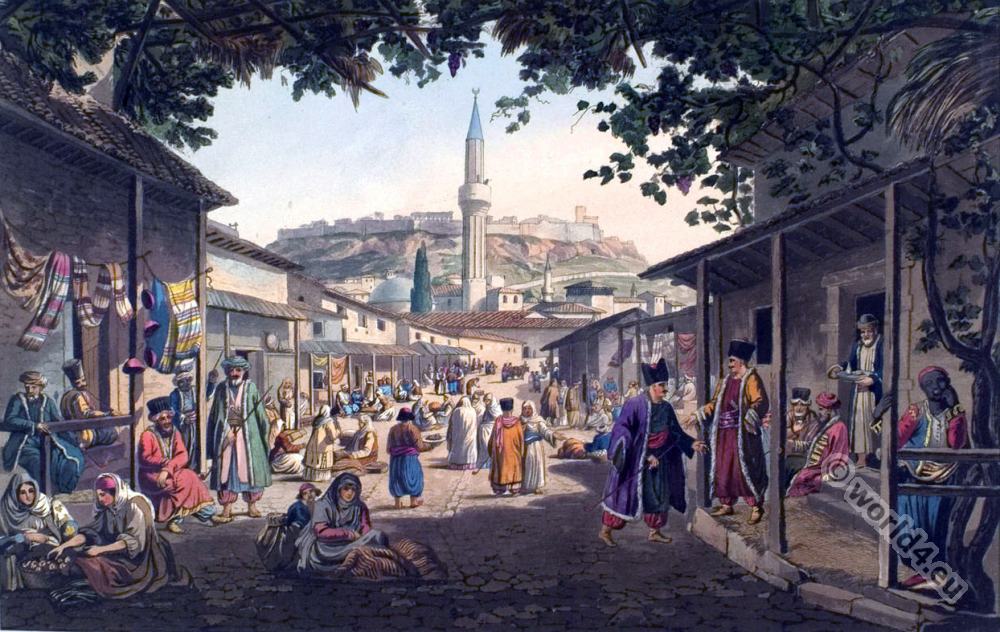Entrance to the Tower of the Winds at Athens.
TO the south-east of the Roman Agora is the octagonal Tower of the Eight Winds; the Clepsydra of Andronikos Kyrrheste (Andronicus of Cyrrhus), described by Vitruvius; called Horologium by Varro, and was the water clock (dates from around 50 BC), or chronometer, a wind vane as well as weather guide of ancient Athens. It is worthy admiration more from its peculiarity than beauty. It escaped the observation of Pausanias, while Stuart, in numerous plates, renders justice to so considerable and perfect a remain of antiquity.

Over the lintel, which faces the north-east, upon a red ground, is inscribed the Arabic Lā ilāha illā ʾllāh Muḥammadun u rasūlu ʾllāh — declaring there to be no God but God, and Mohamed to be his prophet.
The wooden floor of the interior rests upon the lower cornice, many feet above the ancient pavement. The marble walls are washed with an uniform white. The Mihrab, painted in perpendicular stripes of green and red, indicates by its position the direction of the Kaaba, or oratory of Mecca; each side of this is a wax candle, and the green flag of the prophet has also its place. The Koran is deposited within this niche, and an imitation of the two-edged sword of Ali is attached to the adjoining wall.
Before these is performed the circularly whirling dance of the Dervishes, witnessing which, the spectator will find it as difficult to remain serious, as it would be dangerous to appear otherwise. Whirling dervishes are not alone the actors in this piece of mummery, as other Turks mix with the party. In a circle, sitting upon the floor, they begin with the praises of God and the prophet; their heads and bodies by their motion backwards and forwards indicating the fervency of their devotion, as well as keeping time in unison with two small drums, the only instrumental accompaniment, until the paroxysm of enthusiasm animates the whole congregation, who simultaneously start up and whirl in ceaseless frenzy around the apartment, while the sheikh or chief, attired in the sacred green, and wearing a large white turban, incites them by his voice and the sound of his larger tambour.
This curious ceremony bears a strong resemblance to the festivals of the Corybantes, who, in honor of Cybele, danced to the sound of their cymbals until they became delirious; of which dance the description furnished by Apuleius and Strabo is remarkably applicable to that practiced by the modern Athenian Dervishes.
Source: Views in Greece by Edward Dodwell. London, 1821.
Continuing







